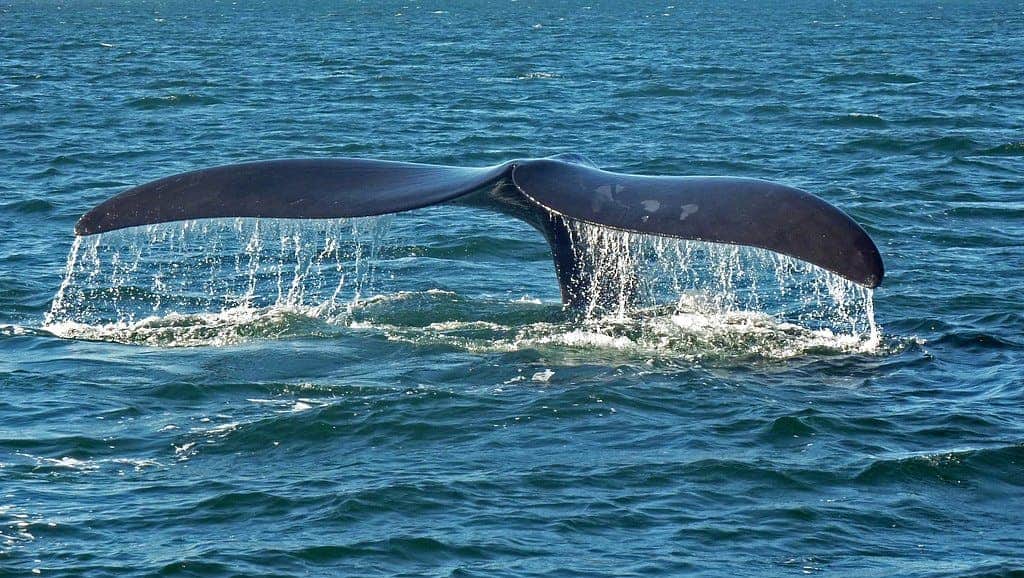Southern fin whales (Balaenoptera physalus quoyi) have been spotted in large numbers in their old hunting grounds near Elephant Island in the Antarctic, according to a new study. German researchers spotted over 100 groups of whales during two expeditions in 2018 and 2019, with most groups made up of one to four fin whales. It’s a sign that the species may be recovering after being in serious trouble.

Fin whales were brought to near extinction by twentieth-century industrial whaling. Over 700,000 individuals were killed between 1904 when intensive commercial whaling started in the Southern Ocean, and 1976, when the catch quota of fin whales was set to zero – ten years before the moratorium on whaling was implemented.
Studies have estimated that the fin whales’ population had been reduced to 1-2% of its pre-exploitation size of 325,000 animals. Cetacean surveys between 1978 and 2004 reported very few whales at their feeding grounds on the northern tip of the Antarctic Peninsula. However, the situation seems to be improving.
In 2012, an observation of a group of more than 100 animals was reported. A year later, an aerial cetacean survey around the South Shetland Islands provided an abundance estimate of almost 5.000 whales. Then, in 2016, a shipboard cetacean survey reported high fin whale densities at Elephant Island and the South Orkney Islands.
“These consistently high numbers were our motivation for a dedicated assessment,” the researchers wrote in their study. “We, therefore, conducted two surveys (shipboard and vessel-supported helicopter), which confirm a return of the whales to their ancestral feeding grounds in high numbers, forming large feeding aggregations.”
The comeback of fin whales
The researchers, working alongside a team of wildlife filmmakers from the BBC, were able to register footage of up to 150 southern fin whales in Antarctica. The drone footage shows the whales jumping and diving through the water, blasting bursts of air as they surface. It’s “one of nature’s greatest events,” the researchers told BBC.
For their study, they carried out two expeditions in 2018 and 2019 and recorded hundreds of groups of fin whales, ranging from small gatherings of just a few individuals to eight groups of up to 150 animals. Based on data gathered from their surveys, the researchers estimated there could be at least 8,000 fin whales in the Antarctic area
Fin whales live up to 70 or 80 years and have just one calf at a time. This means their recovery is bound to be a slow and delicate process. The International Union for Conservation of Nature (IUCN) currently lists fin whales as “vulnerable” and estimates a global population as 100,000 – with most of these located in the northern hemisphere.
More whales could also be a positive sign for the ocean’s health, and even for the climate crisis. Whales eat iron-rich krill and defecate in surface waters, returning nutrients to the ocean that stimulate the growth of phytoplankton. As plants on land, phytoplankton photosynthesizes and turns carbon dioxide into energy and oxygen.
Ultimately, this goes to show that there is hope for species when human pressure eases. But the fin whales aren’t out of the woods just yet. Despite the moratorium, Japan and Iceland have resumed whaling.
The study was published in the journal Scientific Reports.


